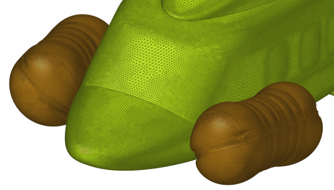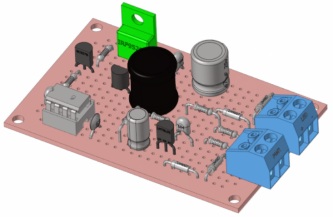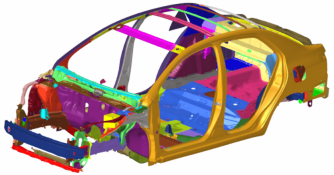Example: Fuse Mesh
The Fuse tool can be used with several types of analyses where mesh connections are required.

Figure 1. CFD Fluid Analysis Model Preparation. Create a water tight, fluid volume for CFD analysis by connecting shell and solid parts.

Figure 2. Thermal Analysis Model Preparation. Prepare the model for thermal analysis by connecting closed shells across the assembly.

Figure 3. Electromagnetic Analysis Model Preparation. Define connections across part assemblies by connecting the midmesh of shell parts.